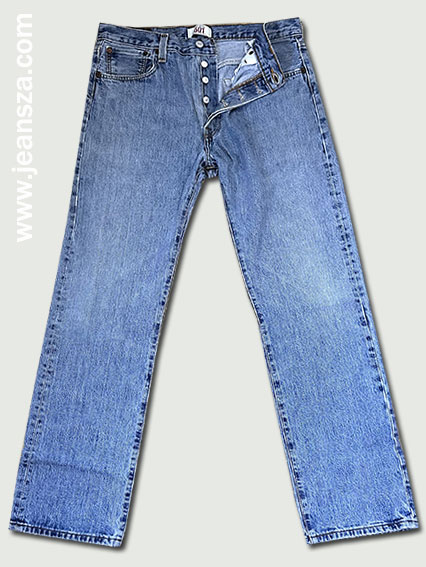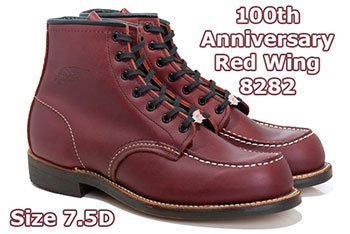Levi's is a global leader in denim apparel and accessories. The company sells its products in over 110 countries and has over 2,500 stores worldwide. Levi's is known for its iconic designs, such as the 501 Original Button Fly Jean and the Levi's Trucker Jacket. The company is also committed to sustainability and ethical manufacturing practices.
- 1853 Levi Strauss arrives in San Francisco and opens a wholesale dry goods business, selling clothing, blankets, handkerchiefs, etc. to small general stores throughout the American West.
- 1872 Jacob Davis, a Reno Nevada tailor, writes to Levi Strauss, telling him about the process he invented to rivet the pocket corners on men’s pants to make them stronger. He suggests the two men take out a
patent on the process together and Levi agrees. - 1873 Levi Strauss & Jacob Davis are granted a patent on the process of riveting pants by the U.S. Patent and Trademark Office on May 20. It is patent number 139,121 and this is the invention of the blue jean. The pants - called “waist overalls” - have one back pocket with the Arcuate stitching design, a watch pocket, a cinch, suspender buttons and a rivet in the crotch. We don’t know the origin of the Arcuate
stitching design. Stories about it representing the wingspread of a bird are myths; the loss of our records in 1906 (see below) makes it impossible to know why the stitching was first used. There may have
been a tradition of pocket stitching on men’s workwear but this has not been found in any research done so far. The cinch and suspender buttons were standard on men’s pants. Keep in mind that we did not invent the cut or fit of the waist overalls; what we did was take traditional men’s work pants and rivet them, creating the new category of workwear which we today call blue jeans.
The pants are made of 9 oz. XX blue denim, which comes from the Amoskeag Mill in Manchester, New Hampshire. They are sewn in San Francisco, probably in a combination of factory production and home sewing. Because of the loss of historical records in the 1906 earthquake and fire we don’t yet know when the first factories were opened. It’s also possible we leased factory space in the 1870 and then opened our own factories in the 1880s. - 1886 The Two Horse brand leather patch is first used on the waist overalls. Its purpose was to demonstrate the strength of the pants and reinforce our status as the originator of patent riveted clothing.
We knew that the patent would go into the public domain around 1890 and decided to reinforce our message of originality and strength graphically. There may also have been a tradition of some sort of
patch on men’s workwear at this time, but this has been hard to research. - c1890 The rivet patent goes into the public domain, so that Levi Strauss & Co. is not longer the exclusive manufacturer of riveted clothing. Lot numbers are first assigned to the products being manufactured. 501®
is used to designate the famous copper-riveted waist overalls. We don’t know why this number was chosen. We also made a 201 jean, which was a less expensive version of the pants, as well as other products using other three-digit numbers. Because of the loss of our records in 1906, the reasons for many of these changes are unknown. - c1901 The pants – now just called “overalls” - now have two back pockets. It’s likely we added this additional pocket due to consumer requests or changes in men’s fashions at the time.
- 1902 Levi Strauss dies at the age of 73. His nephews take over the business; their descendants still run the company today.
- 1906 The San Francisco earthquake and fire destroys the headquarters and factories of Levi Strauss & Co.
A new factory is built at 250 Valencia Street in San Francisco and opens in November. - 1910s Sometime during this decade the jeans are sewn with a felled inseam. Prior to this time the inseam was “mock” felled.
- 1915 The overalls win a “Highest Award” at the Panama-Pacific International Exposition in San Francisco.
LS&CO. begins to buy denim from Cone Mills in Greebsboro, North Carolina. - 1922 Belt loops are added to the overalls, but the suspender buttons are still retained. The cinch is also still used on the pants, but some men cut if off in order to wear the overalls with a belt. Again, the addition
of belt loops was in response to changes in men’s fashions and our understanding of what consumers wanted. LS&CO. now buys its denim exclusively from Cone Mills. - c1927 Cone Mills develops the 10 oz. red selvage denim exclusively for the
501® jeans. The denim is woven in 29” wide looms. - 1936 The red Tab is first placed onto the right back pocket of the overalls. The word “Levi’s® is stitched in white in all capital letters on one side only. The Tab is created to differentiate Levi’s® overalls from the many competitors in the marketplace who were using dark denim and an Arcuate stitch. We had not yet trademarked the Arcuate so other companies were using it in direct imitation of us.
- 1937 The back pockets on the overalls are sewn so that they cover the rivets. This is in response to consumers who complained that the rivets scratched furniture and saddles. The suspender buttons are removed from the overalls. Consumers are given snap-on buttons in case they still want to wear suspenders.
- World War II Changes are made to the overalls in order to conform to rules set by the War Production Board for the conservation of raw materials. The crotch rivet, watch pocket rivets and back cinch are removed to save fabric and metal. The Arcuate stitching design is removed as the thread is decorative only and not vital to the usefulness of the garment. In order to keep the design on the pants, LS&CO. sewing machine operators paint it on each pair.
- 1943 The Arcuate stitching design is registered as a trademark.
- c1947 The post-war version of the 501® jeans starts coming off the production line. The cinch is gone forever, the rivets are put back on the watch pocket and the Arcuate is now stitched with a double-needle machine which gives it the “diamond” shape at the point where the two lines of stitching meet. This creates the uniform look of the Arcuate, which is in contrast to previous years, when the single needle application
gave each Arcuate design a unique appearance, depending on the skill of the operator. - Early 1950s The word LEVI’S is now stitched on both sides of the red Tab. We are not sure why this was done.
- 1954 A zippered version of the overalls is introduced and named 501Z. This was introduced as we had begun selling our products on the East Coast of the United States and many people were unfamiliar with the button fly.
- Late 1950s The leather patch is replaced by a Two Horse patch made of heavy-duty card stock, known as the “leather like.” This is due to the fact that the company was selling products nationally, and it was becoming more expensive to use real leather. Also, the newer automatic washing machines were very hard on the real thing.
- 1960 The word “overalls” is replaced by the word “jeans” in advertising and on packaging. We had made other products in the past which we called “jeans” (specifically, denim pants for boys in the 1930s) but our top of the line “overalls” – 501® jeans – did not get this name until teenagers began calling the product “jeans” in the 1950s. No one really knows why the word became associated with the men’s overalls, but teenagers adopted the phrase and it became the term used by all manufacturers.
- c1961 Pre-shrunk Levi’s® jeans are introduced.
- 1964 The jeans become part of the permanent collections of the Smithsonian Institution in Washington, D.C.
- 1966 The first television commercial for Levi’s® jeans is aired. The rivets are removed from the back pockets and replaced with bar tacking. This is due to the fact that the strong rivets eventually wore
through the denim, exposing them and causing the problems that led to their being covered back in 1937: scratching furniture. - 1971 The word “Levi’s® on the red Tab device is now stitched in white with a capital “L” only; the “E” looks like it changed, leading to the vintage clothing concept of “Big E” and “little e.” This was done to conform to the company’s new housemark – the “batwing” – which was adopted in 1967 and in which the word “Levi’s” is meant to be the proper name of our founder, Levi Strauss.
- 1981 501® jeans for women are introduced, with the airing of the famous “Travis” television commercial.
- 1983 Cone Mills begins to introduce XXX denim through the use of 60” wide looms.
- 1984 The renowned “501 Blues” television advertising campaign is launched at the summer Olympic Games in Los Angeles.
- 1985 LS&CO. wins the Governor’s Committee Media/Advertising Award from the New York State Office of Advocates for the Disabled, for its positive portrayals of disabled people in the “501 Blues” television
ads. - 1986 The first in a series of innovative television commercials for the 501® jeans airs in Europe. These commercials feature classic American rock music mixed with nostalgia and romance.
- 1992 Due to the interest in “vintage” Levi’s® jeans on the part of consumers worldwide, LS&CO. introduces the “Capital E” jean in the United States. This also follows on the success of the vintage model created earlier by Levi Strauss Japan.
- 1993 Levi Strauss & Co. sponsors the “Send Them Home Search,” a contest to find the oldest pair of Levi’s® jeans in the United States. The winning pair dates to the late 1920s.
- 1996 Building on the success of the Capital E product, a new series of vintage reproductions - called the Levi’s® Vintage Clothing line - is introduced in stores worldwide.
- 1997 LS&CO. buys a pair of c1890 501® jeans for $25,000.
- 1998 The Levi’s® 501® jeans celebrate 125 years of originality.
- 2003 LS&CO. celebrates the 130th anniversary of the invention of the blue jean.
From the June 28, 1873 issue of Pacific Rural Press
“A New Pocket Fastening - Mr. J.W. Davis, formerly of Reno, Nevada, but now residing in this city [San Francisco] has just received through the Scientific Press Patent Agency, letters patent for an improvement in fastening the seams of pockets. The improvement consists in the employment of a metal rivet or eyelet for fastening the
seams.
“Simple as this device seems, nevertheless it is quite effective, and we do not doubt that his manufacture, of overalls especially, will become quite popular amongst our working men, as the overalls are made and cut in the style of the best custom made pants. Nothing looks more slouchy in a workman than to see his pockets ripped open and hanging down, and no other part of the clothing is so apt to be torn and ripped as the
pockets. Besides it slouchy appearance, it is inconvenient and often results in the person
losing things from his pockets.
“Levi Strauss & Co. of this city are sole agents for the new manufacture, and will soon place them in the market in large quantities, so that our miners, farmers and workingmen can supply themselves with superior overalls.”
Levi's jeans have been worn by people of all ages and backgrounds, from cowboys and miners to celebrities and fashion icons. The brand is known for its versatility and durability, and Levi's jeans have become a wardrobe staple for millions of people around the world.








